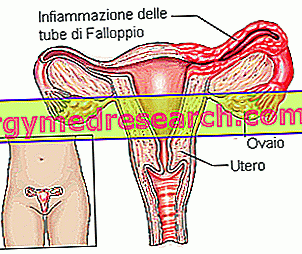Related articles: Hypertrophic adenoids
Definition
Adenoids are cluster formations made up of lymphoid tissue, also known as pharyngeal tonsils. They are found on the posterior wall of the nasopharynx (which connects the nasal cavities with the oropharynx) and contribute, together with the tonsils, to create a first defensive barrier against pathogens from outside.
Adenoid hypertrophy can be physiological or secondary to constitutional factors (lymphatic diathesis), pathological (recurrent inflammation) and environmental (cold-damp climate, exposure to allergens, etc.). Adenoids can increase their size in response to infectious processes (viral or bacterial), allergic phenomena and, sometimes, gastroesophageal reflux.
Adenoid hypertrophy is common especially among children aged between 2 and 6 years.
Most common symptoms and signs *
- Halitosis
- Anosmia
- Difficulty concentrating
- Dysphagia
- Dyspnoea
- Insomnia
- Hearing loss
- Sore throat
- Closed nose
- nocturia
- Otalgia
- Ogival palate
- Snoring
- Nosebleeds
- Drowsiness
- Night terror
- Cough
- Nasal voice
Further indications
Hypertrophic adenoids make breathing through the nose more difficult (patients breathe essentially from the mouth) and can interfere with the correct outflow of mucus from the ear. Possible consequences include nasal obstruction, rhinolalia (nasal tone of voice), otitis media (due to obstruction of the Eustachian tube), halitosis, sore throat and difficulty swallowing.
Recurrent infections or persistent discharge into the middle ear can lead to reduced hearing; in children, conductive hearing loss can influence learning and social interaction.
Another characteristic symptom of hypertrophic adenoids is the adenoid facies: the subject shows an elongated face and a tendency to keep the mouth in a semi-open position.
Serious or recurrent infections can lead to adenoid hypertrophy that can block the back of the nose and throat. By obstructing the normal flow of air, hypertrophic adenoids can make it more difficult to sleep: the patient can snore or experience episodes of obstructive sleep apnea (a condition that involves the suspension of breathing for a few seconds).
In some cases, the pathological enlargement of the adenoids causes neuropsychic problems due to reduced oxygenation, such as intellectual numbness, pavor nocturnus and enuresis.
Adenoid hypertrophy is diagnosed by examination with a flexible fiber optic rhinopharyngoscope.
Depending on the cause, the treatment may include topical intranasal corticosteroids (in case of allergy) and antibiotics (if an underlying bacterial infection is detected). In cases of significant nasal obstruction or persistent and recurrent otitis media, adenoidectomy is indicated to surgically remove the adenoids.



